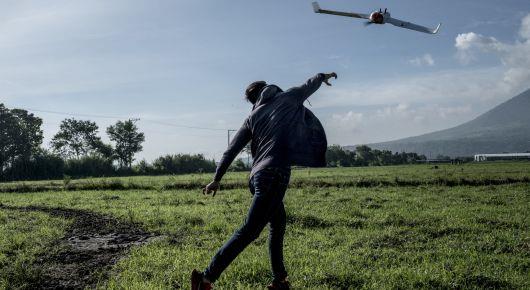Digitalization offers agriculture a faster pathway to recovery from COVID-19 crisis

Digital technologies have been part of agriculture since well before the COVID-19 pandemic began, but the current crisis has given further impetus to finding new applications for technology in food production. The Food and Agriculture Organization of the United Nations (FAO) today carried out a webinar – focusing on Europe and Central Asia – that looked at the multiple challenges of digital agriculture, and at the innovation and change that can result from embracing digital technology. The recording of the event is now available on YouTube.
The webinar, which addressed linkages in terms of COVID-19 response and digitalization, presented an array of digital-technology solutions applied in agriculture, their inter-connectivity and potential benefits, and the factors hampering their implementation during the pandemic. Speakers identified how regional trends have changed during the pandemic, and shared their experience on helping advance digital rural transformation and building resilience when faced with a crisis.
“Promotion of digitalization is deeply embedded in FAO’s work in Europe and Central Asia; it is highly relevant when it comes to supporting smallholders and rural communities, transforming food systems, and advocating for sustainable resource management,” said Sophie Treinen, FAO Knowledge and Information Management Officer.
Real-life examples presented at the webinar included the European Union’s SmartAgriHubs – a partnership aimed at realising the digitalization of the European agri-food sector through innovation, electronic trade mechanisms, and a crop monitoring and price prediction tool for increased market transparency and improved food security through relevant, timely, and actionable information. Other digital tools that have proven valuable include digital weather monitoring and climate services, and enhanced digital skills for farmers.
“The agri-food sector can harness digital tools ranging from e-commerce and mobile technologies for increasing access to markets, to the use of artificial intelligence for improved pest control and crop genetics, as well as tools allowing optimised management of natural resources and early warning of food-security threats,” pointed out FAO Regional Programme Leader, Raimund Jehle. “It will facilitate a holistic approach, bringing the economic, social and environmental dimensions together to achieve the Sustainable Development Goals.”
A panel discussion of representatives from various agriculture sectors that concluded the webinar focused on COVID-19 response through digitalization.
“The pandemic sped up the application of digital technologies on an even broader scale; however, it also revealed a deeper rural–digital divide,” Treinen added. “Lack of digital skills, poor connectivity and lack of investment in relation to smallholders remain part of the barriers that we need to overcome. On the positive side, the pandemic has reconnected urban dwellers with nature and is opening the way to better-appreciated agritourism. Linking smart cities and smart villages is an option to consider in the near future, in order to reduce the rural digital divide.”
The webinar is part of an FAO series of regional COVID-19 webinars.
27 May 2021, Budapest, Hungary
